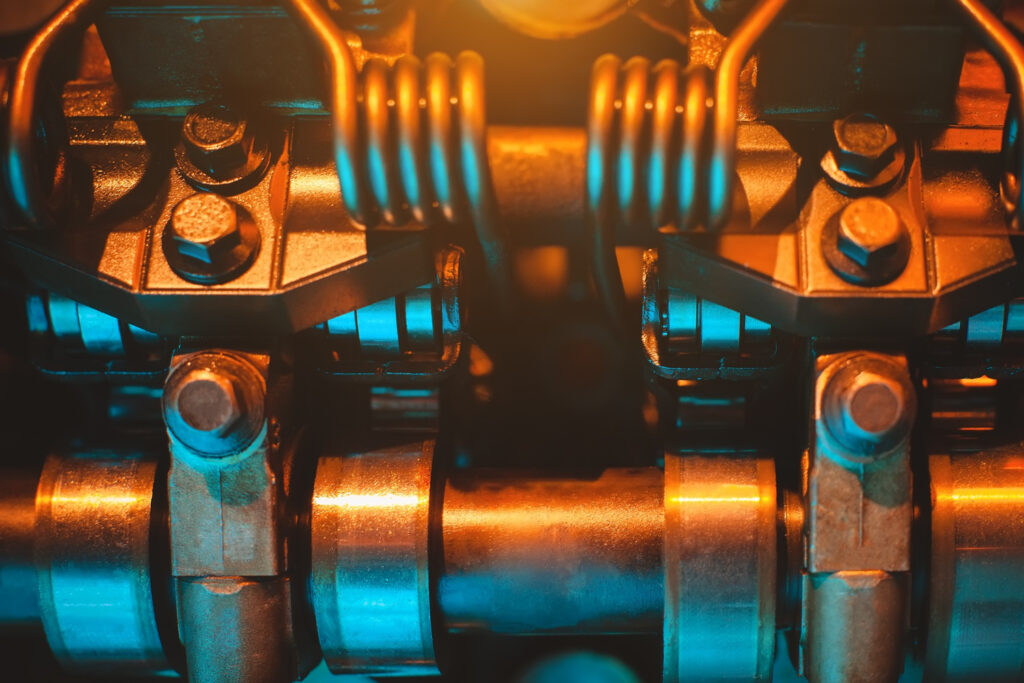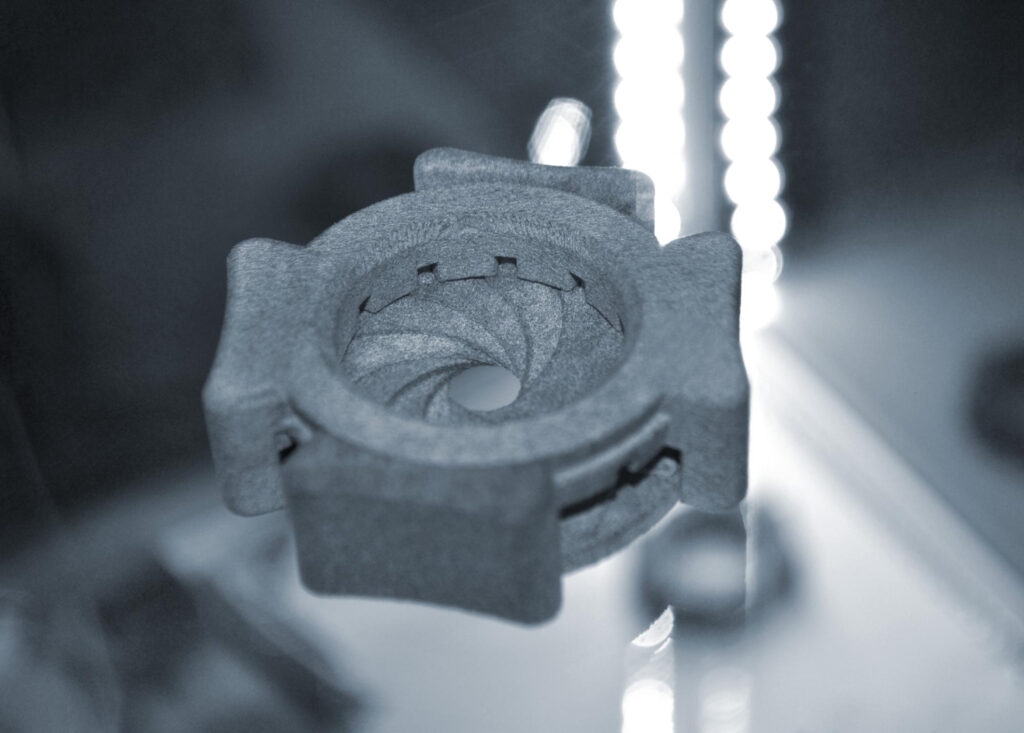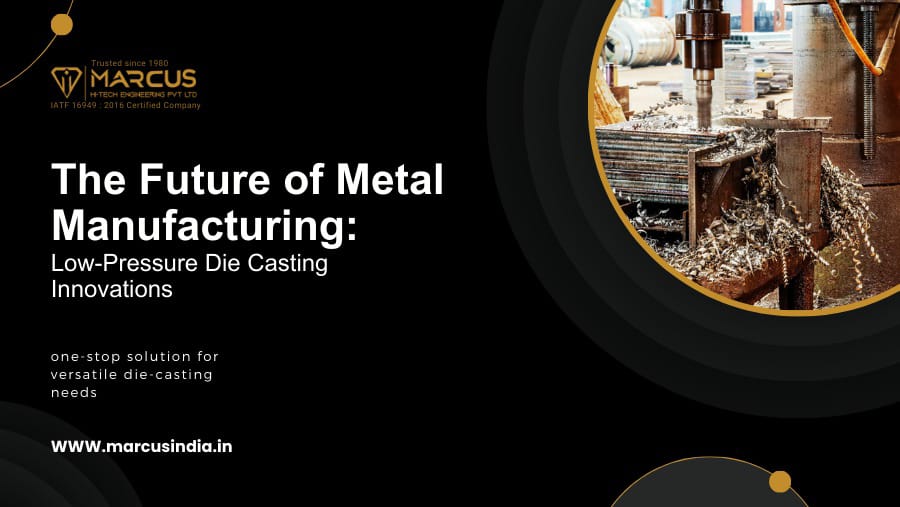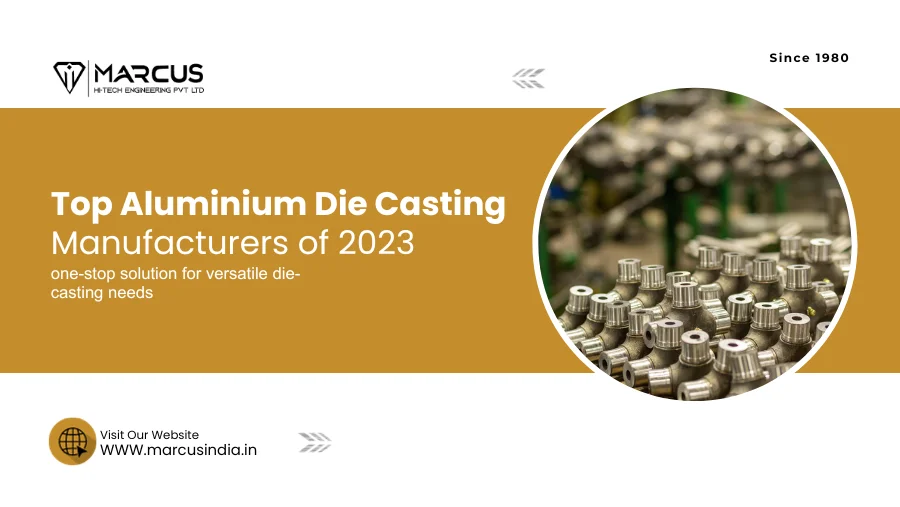Metal manufacturing is a growing industry and innovation is the only key to stay ahead of the competition. The rapid rise in demand for infrastructure development is transforming the space into a competitive place. One area that holds immense potential for the future of the metal industry is low pressure die casting. Out of all the available techniques, LPDC has established itself as a revolutionary method by leveraging the benefits of both high-pressure and gravity die-casting. LPDC combines the abilities of other casting methods to create complex, lightweight and rich-quality components.
Low-pressure die casting is a versatile manufacturing process that offers many applications across a range of industries. One of the key advantages of low-pressure die casting is its ability to efficiently produce complex and intricate metal components with high dimensional accuracy.
Industries such as aerospace, automotive and electronics have benefitted the most from the invention of low-pressure die-casting. From reduced cycle times and design flexibility to enhanced part quality and improved surface finish, LPDC is poised to change the landscape of metal manufacturing.
In this article, we will delve into the exciting world of LPDC innovations and advancements in LPDC techniques and materials. Eventually enabling manufacturers to make informed decisions about incorporating this cutting-edge technology into their operations. By understanding the basics of LPDC and its advantages over traditional methods, you can gain insights into the prospects of this groundbreaking technology.

What is Low-Pressure Die Casting?
Low pressure casting is a technique in which the metal is heated until it becomes molten and injected into a mould cavity. The pressure used to inject molten metal is kept low in the range of 10 to 100 psi, which is much less than other die-casting techniques. Although this pressure casting process is time-consuming, it is known to create smooth surface castings with precise dimensions.
Thanks to low-pressure metal die casting, complex components can be created with precision. The low-pressure injection minimises air entrapment and porosity, which in return furnishes with improved structural integrity. The controlled metal flow leads to cover intricate details. Thus, low pressure moulding is an ideal choice for shaping complex metal components.
How does Low-pressure Die Casting Work?
The die casting steps start with the drafting phase. A reusable metal mould, also called a die is thoroughly cleaned and used. Runners and Sprues are attached to the die for easy removal of metal. The process starts with melting the metal and bringing it to its casting temperature. For instance, Zinc has a casting temperature of 400 to 400 degrees Celsius and aluminium has 680 to 750 degrees C.
The moulted metal is then carried into a container from where it will be poured carefully into the mould. The low pressure allows the metal to settle with ease and fill the air traps. Finally, on solidification, the pressure is released and the component will be removed after the mould cools down.
Applications of LPDC
Thanks to its ability to produce components with precision, LPDC is widely used to manufacture parts for automotive, aerospace and electronic industries. Engine parts such as transmissions, shock-ups and cylinder heads are manufactured for automotive space. Similarly, power transistors and heat sink components are produced for the electronic industry.
Lightweight components are the key to improved fuel efficiency and reduced emissions. Therefore, aerospace relies on low-pressure die casting. With its versatility and cost-effectiveness, it is no wonder that low-pressure die casting continues to be a popular choice among manufacturers worldwide.

Advantages of Low-pressure Casting
- Improved Casting Quality
Low volume die casting offers better quality than other casting procedures. The systematic flow of metal, reduced turbulence, and better dimension accuracy should be credited for that. Due to this property, the final products have better surface area and low defect probability. Thus, an excellent choice for vital components.
- Thinner Wall Sections
Thin wall manufacturing is indeed a tough task. However, due to the growing demand for lightweight components, industries are relying heavily on thinner wall components. Thanks to Low-Pressure Die Casting, the production of thinner wall sections, even with complex geometries is now possible. These thin wall sections serve as a crucial component for the automotive and aerospace industry, where the strength-to-weight ratio needs to be maintained.
- Budget Friendly
Cost-effectiveness is one of the biggest offerings of LPDC. Although LPDC machines require a specialised labour force, it is budget-friendly in the long run. It provides the finest production values and as a result, LPDC is more beneficial than other casting methods. Due to low pressure, the outputs are more accurate which reduces the defects and need for rework. Also, lower scrap rates are a cherry on top.
- Reduced porosity
One of the standout advantages of LPDC is reduced porosity in the finished product. Porosity stands for tiny holes or a state of being porous. Liquid can travel in these holes and eventually hurt the metal in the long run. Therefore, it is crucial to not have minimalist porosity in metal components. Because low-pressure casting is a slow process with precision, the output comes with reduced porosity.
- Eco-friendly Process
Environmental norms can affect the working of any manufacturing company. Sudden government actions are unpredictable. Therefore, industries need to switch their working style to more eco-friendly means. Low-pressure casting accounts for lower material waste as well as consumes less energy. Thus, a perfect manufacturing process for industries prone to environmental norms.

Future Innovations that Can Change the Outlook
Although low process die casting has numerous benefits, certain prospects can revolutionise the industry. These changes will not only be convenient but also elevate the industry to new heights.
- Potential for Automation
Artificial intelligence and robotics can automate the process up to a certain extent, leading to better control and enhanced productivity. What’s more, AI can affect foam patterns and improve casting consistency. Automation will also reduce manual intervention which will reduce labour costs along with the overall cost of manufacturing.
- Integration of 3D printing
The integration of 3D printing will open new creative ways for complex component designs. Enhanced design flexibility will allow other industries to push their boundaries with complex parts such as Aerospace and Defence. It will also open doors to rapid prototyping and faster overall speed, maintaining the speed issue of low-pressure die casting.
- Sustainable practices
Environment protection is always a concern for manufacturing industries. Although LPDC supports reduced material waste, it still needs upgradation. Inductions or electric arc furnaces can change space, leading to energy-efficient casting. Coupled with aluminium pressure die casting, these innovations can reach up to zero waste, as aluminium can be recycled.
- Material innovation
The research for materials and composites with casting properties is already underway. Properties such as low outgassing, improved thermal conductivity and dimensional stability are what researchers are looking for. While low volume aluminum casting has similar properties, research for novel alloys will tailor lost foam casting and perform compatibility with foam patterns.
- Digital Twin Technology
Digital twin technology along with simulation software will be the biggest optimization of the casting process. These technologies will help manufacturers create a virtual simulation before the process to predict defects, metal flow and output conditions. As a result, the industry will observe a reduced development cycle, reduced scrap, better quality and eco-friendly process.
- Vacuum-based die-casting
Another noteworthy innovation is the use of vacuum-assisted low-pressure die casting, which reduces gas porosity and improves the overall integrity of the castings. This technique involves evacuating the air within the mould cavity, leading to cleaner and more reliable castings. Although low-pressure casting itself produces components with little to no porosity, however, with the integration of a vacuum, air from the slightest hole will be removed.
These breakthroughs in low-pressure die-casting innovations will revolutionise the industry, drive efficiency and reduce production costs while ensuring better performance and reliability of the final products.
When You Should Not Consider Low-Pressure Die Casting?
LPDC is used in most cases, however, it is not suitable for small-scale production. The process involves injection with low pressure, which does not support small-scale but large productions. Additionally, LPDC machines enable precise pressure and temperature control which increases the cycle time. Therefore, in the case of fast cycle requirements, high-pressure die casting should be considered.
Also, materials such as exotic alloys and steel are not compatible with LPDC, for such materials, other casting techniques are used.
The Bottom Line
Low-pressure die casting is a widely adopted manufacturing process utilised in various industries for producing high-quality castings with intricate designs. Over recent years, several innovations have emerged to enhance the efficiency and productivity of this technique. Furthermore, some innovations are under process to ensure better end products and cost-effectiveness.
With the ability to produce high-quality parts at a lower cost compared to other casting methods, low-pressure die casting has become an attractive choice for many manufacturers seeking efficiency and precision. As technology evolves, the role of low-pressure die casting in sustainable and efficient manufacturing processes will grow. Its unique capabilities along with recent innovations will cater for the complex component needs.






